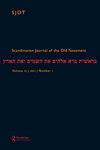Greece and Yehud in the Achaemenid Period: The Background of Cultural Transfer
IF 0.1
3区 哲学
0 RELIGION
引用次数: 0
Abstract
ABSTRACT The paper aims to analyze the circumstances of cultural transfer between the Southern Levant and Greece in the Achaemenid period in order to assess the plausibility of Greek influences on the Hebrew Bible. First, the article addresses the theoretical question of possible “contact zones” between Greek and Levantine cultures. Second, it presents evidence of Greek presence in the Ancient Near East in that epoch. Third, it tries to estimate the possible extent of Greek influence in the Southern Levant. The next question to discuss is the presence of Levantines in Mainland Greece and the meaning of this phenomenon for understanding the situation in Yehud. Finally, the paper deals with the question of the mobility of the inhabitants of Yehud. In conclusion, the authors wonder whether the collected data allow for the creation of a coherent model of intercultural exchange between Greece and Yehud, as postulated by some scholars.阿契美尼德时期的希腊与耶胡德:文化转移的背景
ABSTRACT 本文旨在分析阿契美尼德时期南黎凡特与希腊之间的文化转移情况,以评估希腊对希伯来圣经的影响是否可信。首先,文章探讨了希腊文化与黎凡特文化之间可能存在的 "接触区 "这一理论问题。其次,文章提出了希腊人在那个时代出现在古代近东的证据。第三,文章试图估算希腊在南黎凡特可能的影响范围。接下来要讨论的问题是希腊本土是否存在黎凡特人,以及这一现象对于理解耶胡德局势的意义。最后,本文讨论了耶胡德居民的流动性问题。最后,作者想知道所收集的数据是否能够像一些学者所假设的那样,在希腊和耶胡德之间建立一个连贯的跨文化交流模式。
本文章由计算机程序翻译,如有差异,请以英文原文为准。
求助全文
约1分钟内获得全文
求助全文

 求助内容:
求助内容: 应助结果提醒方式:
应助结果提醒方式:


